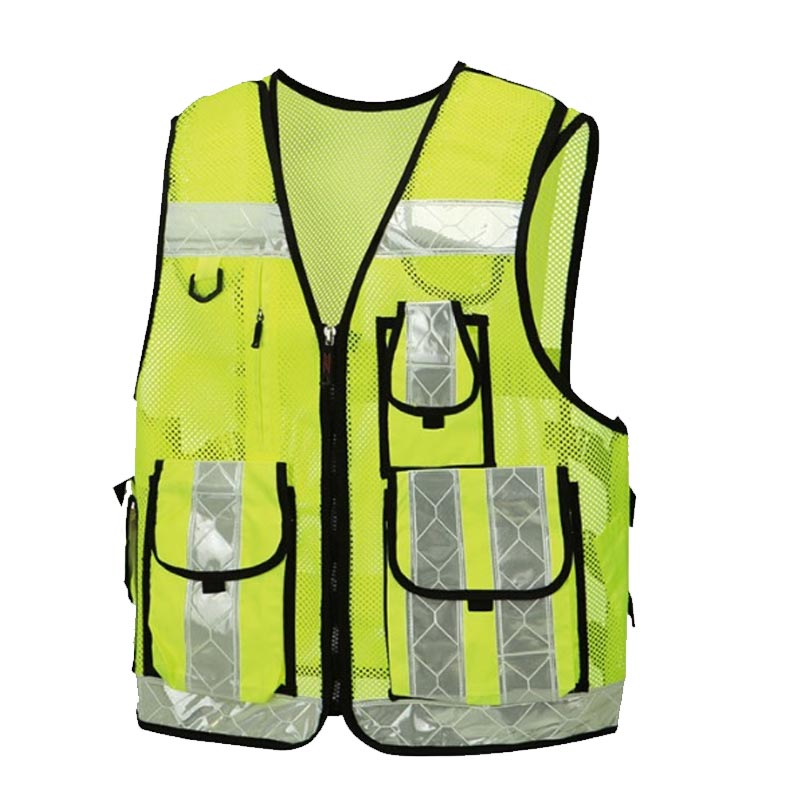Safety vests, also known as hi-vis or reflective vests, are essential pieces of personal protective equipment (PPE) used by workers in a variety of industries. These vests are designed to increase the visibility of the wearer, making them more visible to other people and vehicles in the area. In this blog post, we’ll explore the history of safety vests.
The origins of safety vests can be traced back to the 19th century when railroad workers began wearing bright-colored clothing to make themselves more visible to trains. At the time, railroads were a major form of transportation, and accidents were common due to poor visibility. As a result, workers began wearing brightly colored clothing to make themselves more visible to trains and other workers.
Over time, safety vests became more widespread and were adopted by other industries, including construction, transportation, and emergency services. In the 1970s, the use of safety vests became more widespread with the development of reflective materials, which allowed workers to be more visible at night and in low-light conditions. These reflective materials, which are still used today, are made from tiny glass beads or other reflective materials that are embedded in the fabric of the vest. When light is shone on the vest, the reflective material reflects the light back, making the wearer more visible.

In the 1980s, the U.S. Occupational Safety and Health Administration (OSHA) began requiring the use of safety vests in certain industries, such as construction and transportation. This helped to further increase the use of safety vests in the workplace, and they became an essential piece of PPE for many workers.
Today, safety vests are used in a variety of industries, including construction, transportation, emergency services, and more. They are available in a variety of styles, including safety vests, safety jackets, and safety sweatshirts and are made from a variety of materials. They are also available in a range of colors, including neon yellow, orange, and green, and can be customized with company logos or other graphics.
In conclusion, safety vests have a long history dating back to the 19th century and have evolved over time to become an essential piece of PPE for workers in a variety of industries. Today, they are widely used to increase the visibility of workers and help prevent accidents in the workplace.

Safety vests: Pedestrian safety
In addition to their use in the workplace, safety vests have also become an important tool for pedestrian safety. Many cities and municipalities now require pedestrians to wear reflective clothing when walking or biking at night or in low visibility conditions. This helps drivers and other road users to see pedestrians more easily, reducing the risk of accidents. Safety vests have also become a popular choice for runners, joggers, and other athletes who need to be visible while training or competing in low-light conditions. Many athletic apparel companies now offer reflective clothing options specifically designed for these activities. In recent years, there has also been an increase in the use of safety vests in recreational and outdoor activities, such as hunting and hiking. These vests help to make people more visible to other people in the area, increasing the overall safety of the activity.



Safety vests: International standards
As safety vests have become more widespread and necessary in various industries and activities, there have been efforts to standardize their design and use. One example of this is the development of the ISO 20471 standard for high-visibility clothing. This international standard specifies the minimum requirements for the design and performance of safety vests and other high-visibility clothing. The ISO 20471 standard includes requirements for the size, shape, and placement of reflective material on the clothing, as well as the minimum levels of visibility and retroreflective performance. The standard also specifies the colors that can be used for high-visibility clothing, with fluorescent yellow-green, fluorescent orange-red, and fluorescent red being the most common colors. The ISO 20471 standard is important because it helps to ensure that safety vests and other high-visibility clothing meet certain minimum performance standards. This helps to ensure that these items are effective at making people more visible and reducing the risk of accidents. In addition to the ISO 20471 standard, there are also national and industry-specific standards for safety vests and other high-visibility clothing. These standards may vary depending on the specific needs and requirements of the industry or activity.
Conclusion
In conclusion, the history of safety vests is a long and varied one, with a focus on making work environments and activities safer and more visible for all participants. From their humble beginnings as heavy, reflective garments in the construction industry, safety vests have evolved to include a variety of materials, styles, and uses. Today, safety vests are an essential tool for workers in many industries, as well as for pedestrians, athletes, and outdoor enthusiasts. They are also regulated by standards like the ISO 20471 standard, which helps to ensure that they are effective at making people more visible and reducing the risk of accidents.




